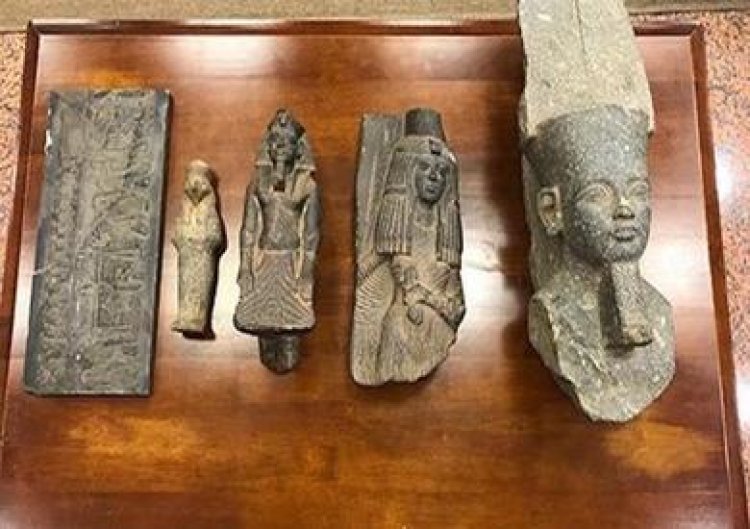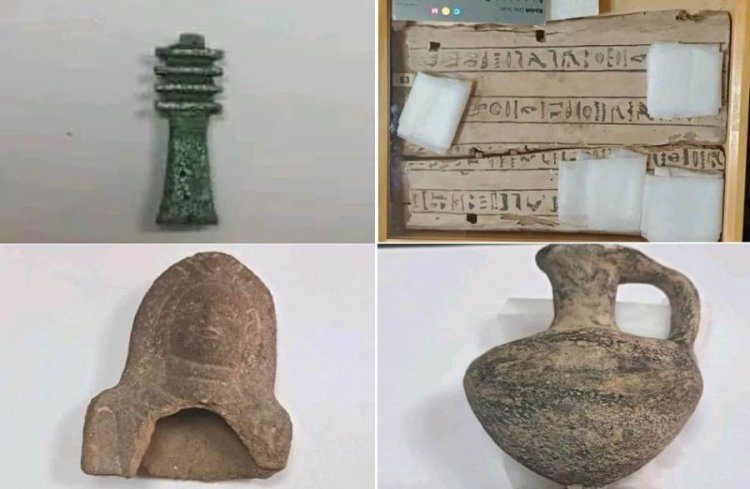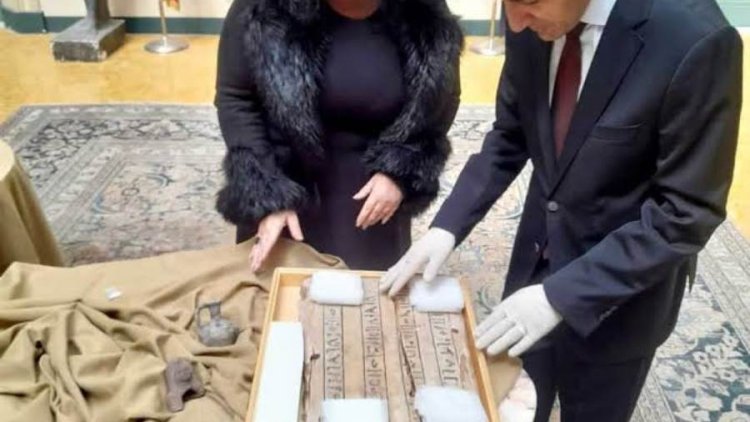Ministry of Tourism and Antiquities receives four artifacts from Italy
The Ministry of Foreign Affairs reveals details of the receipt of 4 artifacts recovered from Italy to the Ministry of Tourism.

The Ministry of Tourism and Antiquities, represented by the Supreme Council of Antiquities, received, four artifacts coming from Italy, after successfully recovering them and proving that they left Egypt illegally.
Dr. Mostafa Waziri, Secretary-General of the Supreme Council of Antiquities, expressed his full appreciation for the fruitful cooperation between the Ministries of Tourism and Antiquities and Foreign Affairs and the International Cooperation Office of the Egyptian Public Prosecutor’s Office, as well as the Italian authorities in recovering these artifacts.

4 Pieces
Pieces received by Egypt, consists of part of a wooden sarcophagus cover with longitudinal lines containing a row of hieroglyphic signs from the late era, which was seized in the city of Oristano in 2017.
Two small pottery pieces representing the upper part of a pottery statue of a lady and a small pottery vessel with a wide mouth and a handle connecting the mouth to the body from the Greco-Roman era, which were seized in the port of Genoa in 2018.
A piece representing a grandfather column, 2.5 cm long, recovered from the Turin Museum and received by the Egyptian Embassy on November 14, 2022.
the recovered pieces will be deposited in the stores of the Egyptian Museum in Tahrir, in preparation for the necessary maintenance work.

30 million tourists
on the other hand, Amr Al-Qadi, head of the General Authority for Tourism Promotion, said that the rate of Arab tourism coming to Egypt has recently increased significantly compared to previous years.
He pointed out that, The Ministry of Tourism and Antiquities, represented by the General Authority for Tourism Promotion, works greatly to promote the northwest coast region, as it is attractive to Arab tourists.
The head of the authority explained that work is underway to open flights between a number of Egyptian cities and tourism-exporting countries, allowing for a greater spread in the main markets. To accommodate 30 million tourists.


 Shrouq
Shrouq 












